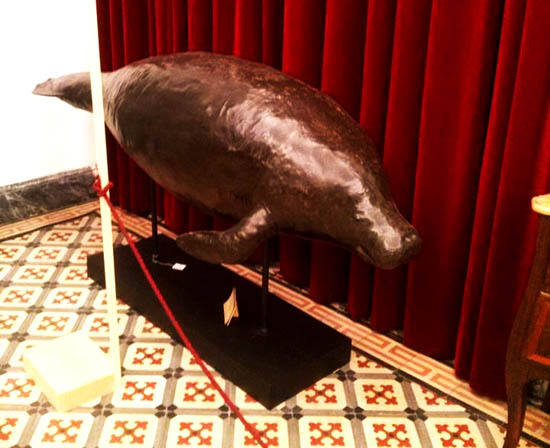
Lost in time, exotic animals, those rare specimens from far away, are still out there. The beginning of this year was fruitful for the study of ancient and exotic animals – those from land, air and also the sea – that began to arrive in Portugal and Europe since the beginning of modern times.
A colloquium on this topic ended last week, which took place at the Faculty of Sciences of the University of Lisbon, organized by the Escola de Mar and with the support of the Calouste Gulbenkian Foundation, CHAM and APCM, and which brought together national and international experts – biologists , historians, archaeologists.
In this event, it was possible to present and debate the natural novelties that came from overseas since the XNUMXth century, and the knowledge that, through these, was being acquired for European natural history.
Here, five dozen people gathered around this theme as unique as its objects of study – monkeys that were brought from Africa and Brazil and bought as pets, colorful parrots that spoke, turkeys brought to Europe and introduced in the current food, and a whole panoply of sea monsters that were no more than large whales, seals or manatees.
Animals that today are part of our daily lives were, at the time, true natural eccentricities that, only from the XNUMXth century onwards, began to be described and illustrated in natural history treatises, in individual pamphlets and to be part of the nobles' collections and the conversations of the people.
All the knowledge that began to be collected and produced by pre-modern naturalists gained substance in Europe and allowed the beginning of a change in the way of studying nature based on empirical and analytical observation of its various elements.
Thus, it was in this period, and also based on exotic living beings, that the bases for the establishment of natural history and the future development of zoology were structured.
For all those, in addition to researchers and students, who are interested in strange and little-known animals, there is still an opportunity that should not be missed.
Until the end of March, only on Saturdays at 16 pm, the doors of the Museum of Science of Coimbra's Zoology Gallery are open to the public.
Here it is possible to take a guided tour, which is unique in itself, which allows a journey through the history of museology and zoology.
In this space, there are monsters of various types, whale bones, unicorn teeth, manatees, and a series of animals that transport us to the time when naturalists collected these elements of fauna and brought them to their cabinets of curiosities, futures museums.
In an environment of silence and (almost) secrecy, we find a zoological collection, which shows us the impressive weight of time, which illuminates our soul and spirit, which makes us fly to other worlds and deserves the respect of centuries of work and dedication.
Here, our footsteps on the polished wooden floor are echoes of memories that reach us from the past, they are shadows of the curious and exotic animals of yesterday but also of today.
Author: Cristina Brito
Science in the Regional Press – Ciência Viva
More information here:
http://www.escolademar.pt/internationalcolloquiumexoticanimals2015/
http://www.museudaciencia.org/


















Comments